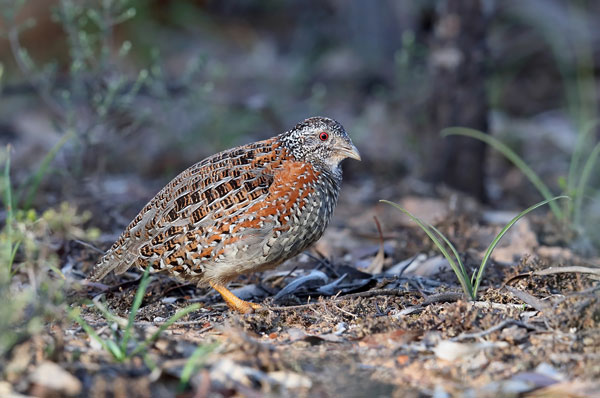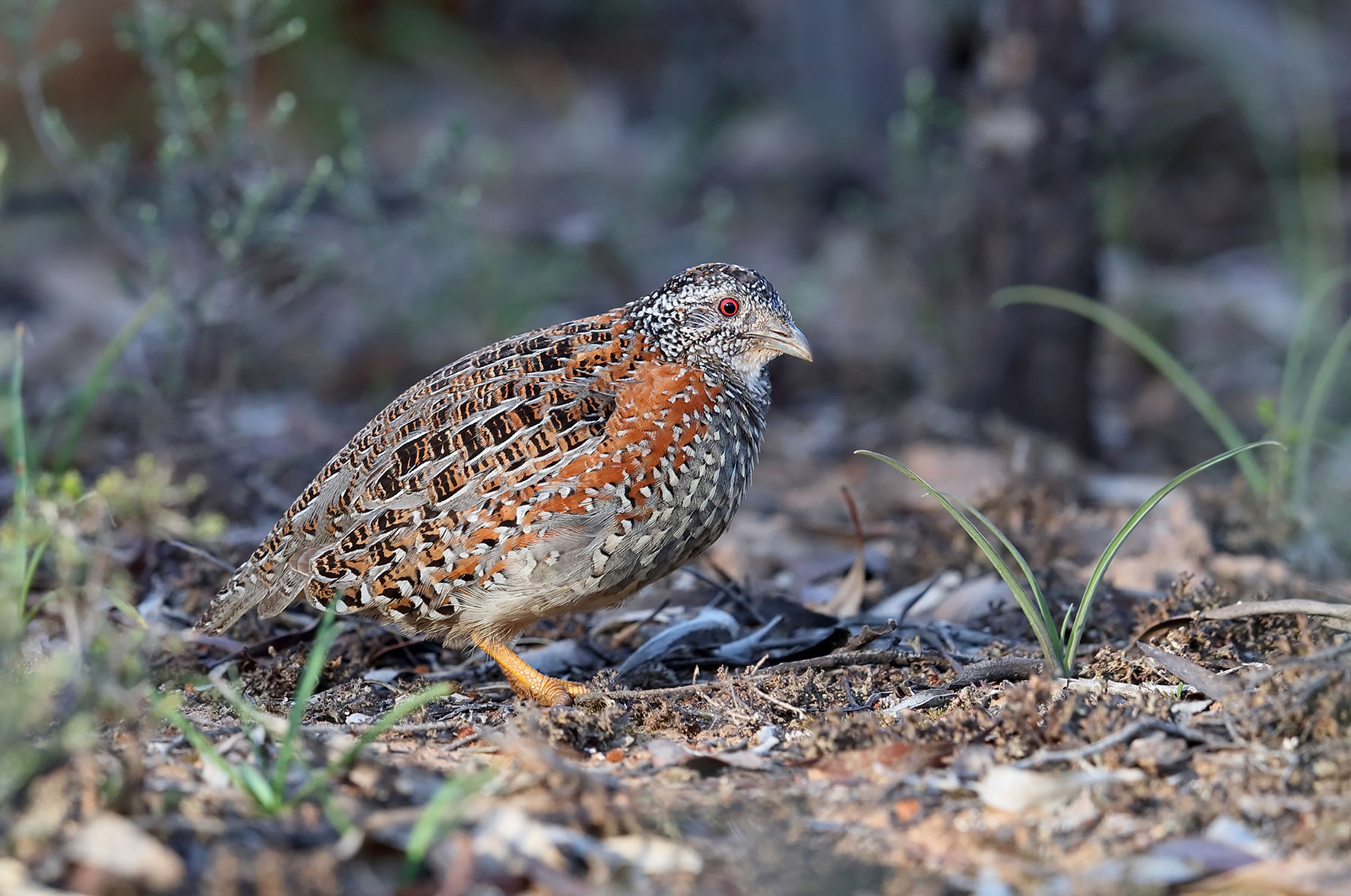By Ian Davidson and Chris Tzaros – Wangaratta Landcare & Sustainability
When birdwatching in bushland areas, our attention is often drawn to species that occur in the trees and shrubs, or that move conspicuously by flying about and calling. However, some birds are quite secretive in their habits and seldom fly or call at all. The Painted Button-quail is one such example, preferring to skulk amongst the undergrowth and only occasionally venture out into the open. They are particularly fond of dry open forests and woodlands with a sparse ground cover of grasses, a good layer of leaf-litter and areas of fallen timber, grass tussocks and stones. They typically occur in pairs or small family parties, known as coveys, of up to six birds.
In Victoria’s north-east, Painted Button-quail are mostly found in gently undulating box-ironbark habitats, larger areas of open red gum forest on floodplains and occasionally in foothill forests nearer the ranges, especially on drier slopes and ridges. They generally avoid moist dense grassy or sedgy areas (preferred by Brown Quail) or open grasslands, farmlands and crops (frequented by Stubble Quail).
Spending all of their time on the ground, Painted Button-quails forage amongst the leaf-litter gleaning seeds and small insects. When foraging, they rake the forest floor with one foot and spin around in small circles pecking any uncovered food items with their beaks. This activity creates small circular depressions (about 10-15 cm in diameter) in the leaf-litter. These scrapes, known as platelets, are a sure sign that Painted Button-quail are not far away and are often the first indication of the birds’ presence. If approached, they usually stay motionless and allow their camouflaged plumage to help them blend in with their surrounds. If pressed, they may run briskly into cover or flush with whirring wings, flying low and fast through the trees before dropping back to cover some distance away.
Unfortunately, Painted Button-quails appear to have declined markedly over the past 20 years or so, being seen much less frequently and in smaller family groups. Drought plays a major role in reducing leaf-litter organisms for them to feed on, and they are also highly vulnerable to predation from foxes and cats. Locally, the best places to see Painted Button-quail are the Warby Ranges (especially the Killawarra forest) and the Chiltern-Mt Pilot forests.


